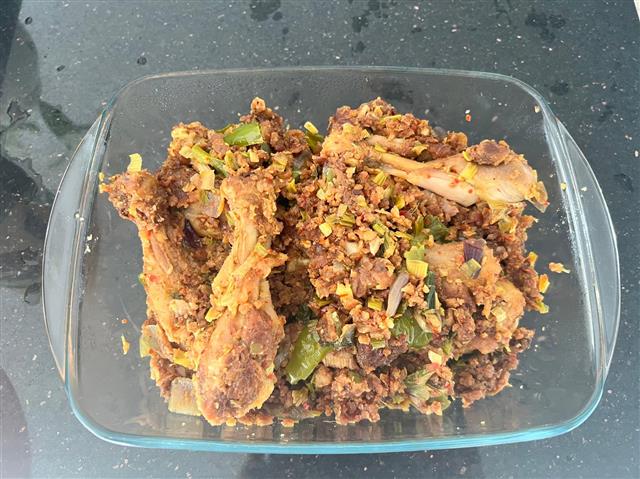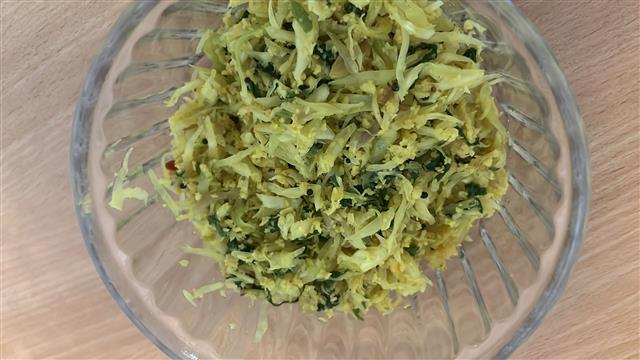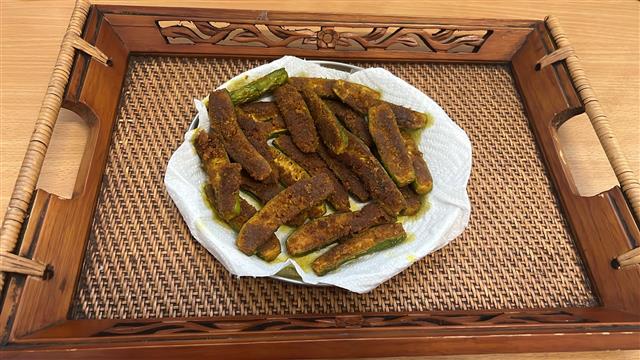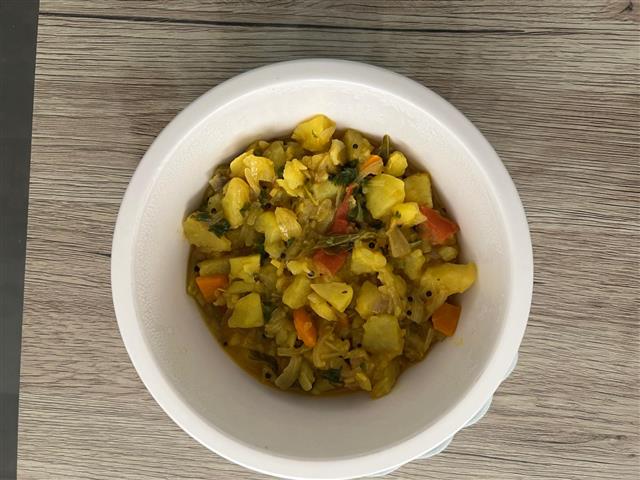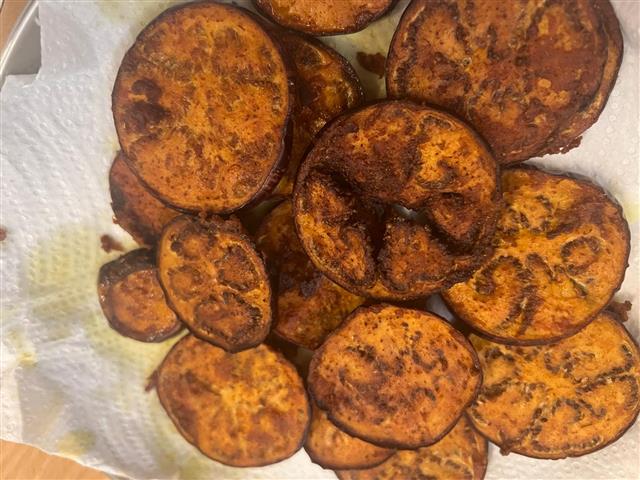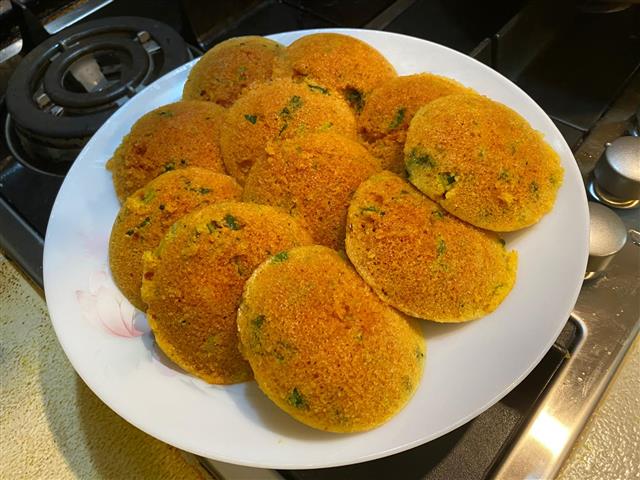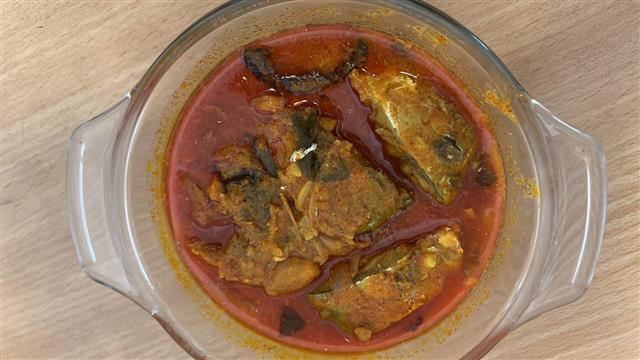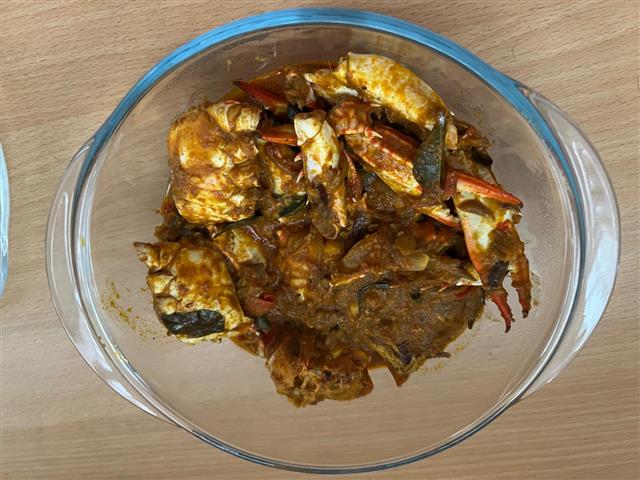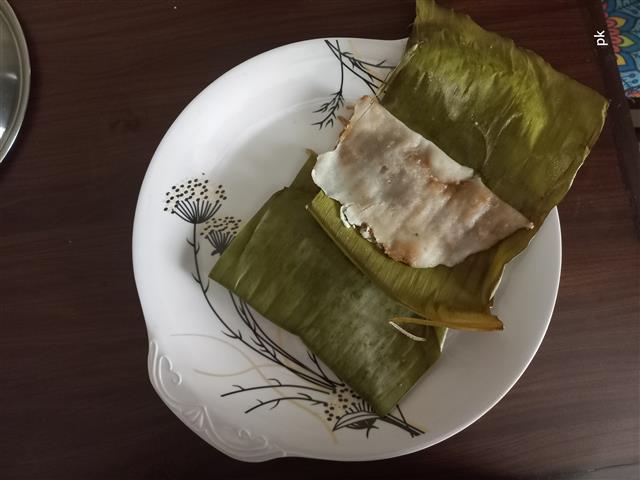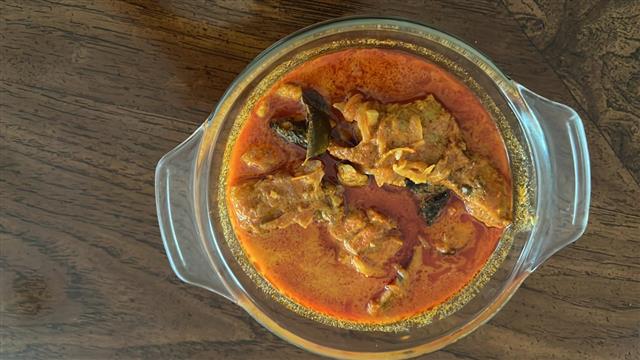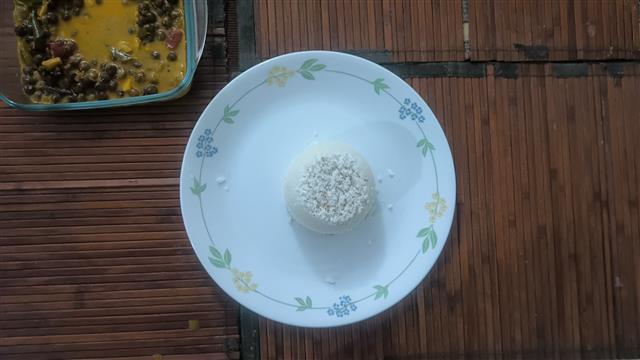
Semiya Upma
(4 reviews)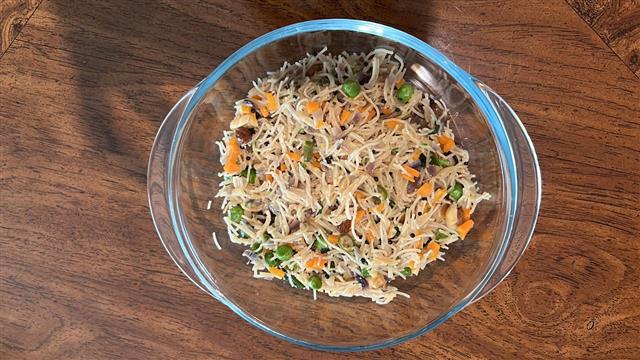
Semiya Upma or Vermicelli Upma is a simple, wholesome, and comforting breakfast or snack dish popular across Kerala.
Lightly toasted vermicelli is cooked with fragrant spices, fresh vegetables, and garnished with crunchy cashews and raisins. A perfect balance of flavors and textures that makes it both nourishing and satisfying.
Ingredients
Directions
- Chop the beans and carrots. Chop the raisins and one tablespoon of cashews. Remove and set aside.
- Heat ghee in a pan and fry half the cashews and raisins until golden brown. Set aside.
- Add one teaspoon oil and roast the vermicelli until golden brown, not burned (skip this step if you use pre-roasted vermicelli). Set aside.
- Now, add oil in the same pan and add the mustard seeds. After the seeds splutter, add the cumin seeds.
- Add onion, green chilli, ginger, curry leaves, and chopped vegetables.
- Once the vegetables are cooked, add the water. Close the lid and cook.
- Mix in the roasted cashews and raisins.
Cooking Tips
• Vegetables Prep: Chop vegetables uniformly to ensure even cooking.
• Roasting Vermicelli: Take care not to burn the vermicelli; roast on medium heat until it's light golden.
• Balancing Texture: Use the right amount of water so the upma is neither mushy nor dry. It should be soft but with a bite.
How to Serve
• Filter coffee or Tea.
• Coconut chutney or Tomato chutney on the side.
• Sambar or yogurt
The Story Behind Semiya Upma
Semiya Upma is a versatile dish found across Indian households. From Tamil Nadu's slightly spiced versions to Maharashtra's sweet and savory mixtures, and Karnataka's garnished variations. However, the Malayali version is distinct for its use of both oil and ghee, and the unique tempering of mustard and cumin seeds. Other variations use one of the ingredients (cooking fat and seeds), not both.
What Is Semiya Upma?
Semiya Upma is a savory dish made from vermicelli, a thin pasta made primarily from wheat or rice flour. In Kerala kitchens, it's a popular quick breakfast or evening snack.
Unlike heavy breakfast options, this dish is light, easy to digest, and packed with subtle aromas of mustard, cumin, ginger, and curry leaves. The addition of sautéed vegetables such as carrots and beans adds color, nutrition, and a pleasant crunch. Raisins and cashew nuts bring in sweetness and richness, rounding out the flavor profile.
This dish underscores Kerala's approach to simple yet flavorful food made with minimal fuss, fresh ingredients, and a harmony of textures and tastes.
Preparing vermicelli upma is a delight for the senses. You start by roasting the vermicelli until golden and fragrant, releasing a warm nutty aroma. The tempering of mustard and cumin seeds in hot ghee and oil t signals the start of flavour-building. The sizzling ginger, green chili, and curry leaves create an inviting fragrance that fills the kitchen.
As the chopped onions soften, colorful vegetables are gently sautéd. Covering the pan steams the vermicelli and vegetables together, infusing the dish with the rich flavors of the tempering.
Finally, folding in fried cashew nuts and chopped raisins adds contrasting textures. You have crisp and sweet bites that elevate the upma from simple to special.
Regional Variations in Kerala
While my style of Vermicelli Upma is quite typical in Malayali homes, subtle variations exist even within the state.
Northern Kerala: Sometimes coconut pieces or grated coconut are added towards the end to enhance texture and flavour.
Central Kerala: Use of more curry leaves and sometimes a dash of black pepper for a mild kick is common.
Southern Kerala: Often includes a pinch of turmeric for color and warmth, and a squeeze of lime juice before serving for brightness.
Health Benefits of Ingredients
This dish, when prepared with fresh vegetables and minimal oil, offers a balanced meal with several nutritional benefits: Vermicelli: A good source of carbs, providing energy. Whole wheat or millet vermicelli versions add fiber and protein.
Carrots and Beans: Rich in vitamins (A, C, K) and minerals like potassium and magnesium, supports immune and heart health.
Cashew Nuts: Contain healthy fats, magnesium, and antioxidants that support brain and heart function.
Raisins: Natural sweetness plus iron and potassium which help with digestion and maintaining electrolyte balance.
Ginger and Curry Leaves: Known for their anti-inflammatory and digestive properties.
This dish is an excellent option for a light, nutrient-dense meal that keeps you satiated without feeling like you've overeaten.
Pro Tips for Perfect Results
→ Cooking with roasted Vermicelli:Save time by using pre-roasted vermicelli.
→ Blanch Harder Vegetables: You can also pre-blanch harder vegetables like carrots for faster cooking.
→ Adjust Spice Level: Green chili amount can be modified based on your heat tolerance. Substitute with black pepper for a different warmth.
Semiya Upma Variations
Tropical Twist: Substitute raisins for chopped pineapple or raw mango for a tropical twist.
Protein Boost: Add cooked peas, roasted chickpeas, or a spoonful of paneer cubes.
Nut-Free: Skip cashews and substitute with roasted sunflower seeds or sesame seeds.
Spicy Version: Add a pinch of red chili powder or a finely chopped green chili for extra heat.
Coconut and Lemony Upma: Add in some dessicated coconut and end with a squeeze of lemon juice.
Diet-Friendly Options
Vegan Version: Simply omit ghee and use only oil for tempering.
Gluten-Free: Use rice vermicelli or millet-based vermicelli instead of wheat.
Low-Calorie: Reduce oil and ghee, and bulk up the dish with more vegetables.
Storing & Reheating Tips
→ Store: Best when eaten fresh.
→ Fridge: Keep it in an airtight container in the refrigerator for up to 2 days.
→ Reheat: Reheat on stove with a splash of water or in the microwave until warm.
Tip Avoid reheating multiple times to preserve texture and flavor.
Common Mistakes to Avoid
→ Not roasting vermicelli enough: This results in a mushy, sticky texture.
→ Adding too much water: Leads to a soggy upma, losing the crunchiness and fluffiness.
→ Overcooking vegetables: Makes them mushy and loses crunch and freshness.
Frequently Asked Questions
- Can I make semiya upma without vegetables?
Yes, but adding vegetables boosts nutrition, flavor, and texture.
- Can I prepare semiya upma in advance?
Yes, but refrigerate and reheat gently before serving for best results.
- Is semiya upma gluten-free?
Regular vermicelli is made from wheat, so it's not gluten-free. Use rice or millet vermicelli as alternatives.
- Can I add meat or eggs to semiya upma?
Traditionally it's vegetarian and vegan if you skip ghee. But you can add boiled eggs or cooked chicken for a protein variation.
Equipment Needed
→ Non-stick frying pan or kadai
→ Wooden spatula* or slotted ladle
→ Chopping board and knife
→ Measuring cups and spoons
→ Serving bowl
